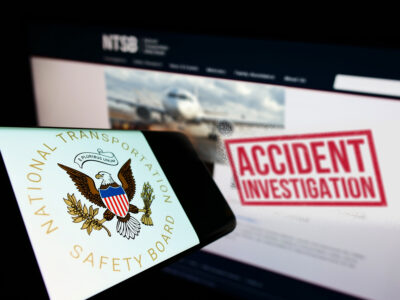A preliminary report from the National Transportation Safety Board (NTSB) on the crash of a single-engine plane on I-684 near the Westchester County Airport on Dec. 12 says that investigators found no evidence of a catastrophic mechanical failure or malfunction of the engine. The NTSB placed the accident site as being near Greenwich, Connecticut, rather than in Harrison, New York, as originally reported shortly after the accident occurred.
The initial reporting after the accident indicated that the pilot had advised controllers there was an engine problem and he was going to make an emergency landing on Runway 16 at the Westchester Airport.
The airplane was a Costruzioni Aeronautiche Tecnam P2008. The commercial pilot was fatally injured and the passenger, who is a private pilot, received serious injuries. The airplane was destroyed in the accident.
 According to preliminary Federal Aviation Administration (FAA) air traffic control radio transmissions and data, the airplane took off from Runway 27 at Linden Airport (LDJ), Linden, New Jersey, climbed and turned left and proceeded north over the Hudson River.
According to preliminary Federal Aviation Administration (FAA) air traffic control radio transmissions and data, the airplane took off from Runway 27 at Linden Airport (LDJ), Linden, New Jersey, climbed and turned left and proceeded north over the Hudson River.
About 6:20 p.m., one of the pilots contacted the LaGuardia air traffic control tower (ATCT) and advised the controller that the flight would proceed northbound over the Hudson River and then subsequently informed the controller that the flight was en route to Albany, New York.
According to the NTSB, at 6:26:42, the controller directed the pilots to contact controllers at New York Terminal Radar Approach Control (New York TRACON), and the flight was subsequently cleared to climb to 3,500 feet mean sea level. At 6:39:16, one of the pilots advised the controller that they wanted to divert to Westchester County Airport because they were, “…losing our engine. ” At this time, the airplane was about 10 nautical miles northwest of the approach end of Runway 16 at Westchester.
The controller informed the flightcrew they could make a right turn then proceed direct to Westchester, then subsequently informed them that they could proceed straight-in for Runway 16. Flight track data showed that the airplane turned right and proceeded toward Westchester, then about 6:40:46, one of the pilots advised the controller that they, “…switched fuel tanks and it looks like it’s we got our engine back for now….”
The controller questioned whether the engine was working and asked whether they wanted to continue toward Westchester, and one of the pilots replied “affirmative.”
While flying at 1,950 feet and about 4.7 nautical miles northwest of the approach end of Runway 16, one of the pilots advised the New York TRACON controller, “we’re losing our engine again…” and would proceed straight in for Runway 16. The controller cleared the flight to land while the airplane continued toward Westchester while descending. Airport video surveillance from Westchester depicted the airplane making a steep left turn and descending while above Interstate I-684. The airplane then climbed quickly and then steeply descended below the tree line.
The NTSB reported that a witness who was driving south on I-684 reported seeing the airplane about 1/2-mile ahead of his position. He noted that he did not hear any sound associated with the airplane and could not tell if the engine’s propeller was rotating. He observed the airplane “fall very fast out of the sky and crash in the center median.”
The witness went to the accident site. He did not smell any fuel or see any evidence of fire, and was able to pull one occupant out from the left side of the airplane before Westchester County Police arrived. The airplane came to rest upright leaning to the left in the narrow median between the north and southbound lanes of I-684 with the outer portion of the right wing extending over the guardrail and shoulder adjacent to the western most edge of the northbound lanes.
The left fuel tank drain sump area was breached due to impact damage and was leaking fuel after the accident, but the tank contained 0.3 gallon of 100 low lead (100LL) aviation gasoline, while the right fuel tank which was not breached contained about 9 gallons of 100LL fuel.
The NTSB’s investigation is continuing. The NTSB notes that the information obtained so far is preliminary and nothing in the preliminary report should be interpreted as being a statement of the probable cause of the accident.






















